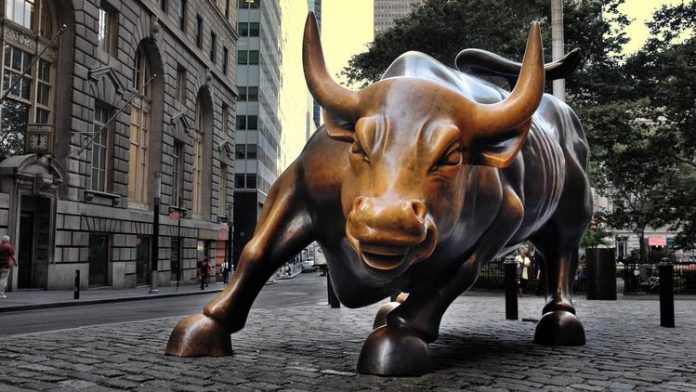Stocks soared today in response to ongoing debt ceiling talks. According to negotiators on both sides of the debate, a deal is now apparently very close. Does that mean we’ll see one before June, though? Who knows; investors heard similar remarks last week but lawmakers failed to produce a deal.
Regardless, renewed optimism sparked a major marketwide rally at the open this morning that only intensified through noon. The Dow, S&P, and Nasdaq Composite surged while yields crept slightly higher, too. The Treasury selloff is clearly not over just yet with rate hike odds climbing alongside shares.
The CME Group’s FedWatch Tool now shows a 64% chance of a rate increase at the June FOMC meeting. That’s up big since 30% yesterday. Just two weeks ago, rate hike odds were at virtually 0%.
Part of the reason for this is the sudden capitulation among Wall Street bears, most of whom saw May’s rate hike as the last one for the year. Bank of America chief equity strategist Savita Subramanian lifted her year-end S&P target from 4,000 to 4,300 earlier this week.
Then, this morning, Citi joined B of A by increasing its exposure to US equities.
“With the end of the Fed hiking cycle upon us, and the AI story probably with further legs, we move our US equity underweight back to neutral, and the technology sector to an overweight,” wrote Citi analysts in a note to clients.
As to why the bank changed its tune, Citi offered the following explanation:
“Still awaiting the US recession. We have been underweight the US against some global markets, given a view of an upcoming (US only) recession. As is well known, equity markets bottom during a recession, not before it has even started. However, we must admit that the long-awaited recession is still not overly close and the expected credit crunch – fallout from the March banking turmoil – has also so far not materialized in a significant form.”
More plainly stated:
This might be the market top for the year but we’re not sure, so we’re going long US stocks anyway since we haven’t seen recession signs yet.
Since late 2021, Wall Street has done a great job of buying at the top and selling at the bottom. This is likely another one of those situations even if stocks rally until the next rate hike (if there is one). Long-term, selling the last rate hike still seems to make sense. Wall Street traders will probably be looking at big losses by year’s end if they start buying right now.
If the Fed raises rates next month, that should mark a turning point for markets. It all depends on whether recession signals show up in the next batch of government data, though. Because if they don’t, the Fed will keep rates going higher despite the fact that most leading indicators are still pointing to a significant economic slowdown in the near future.








